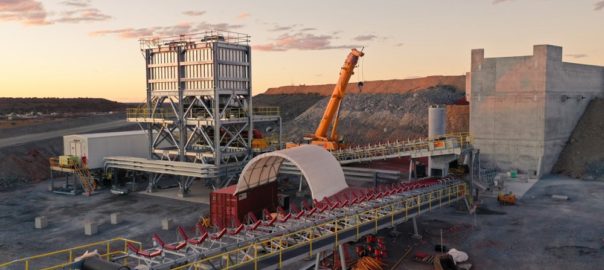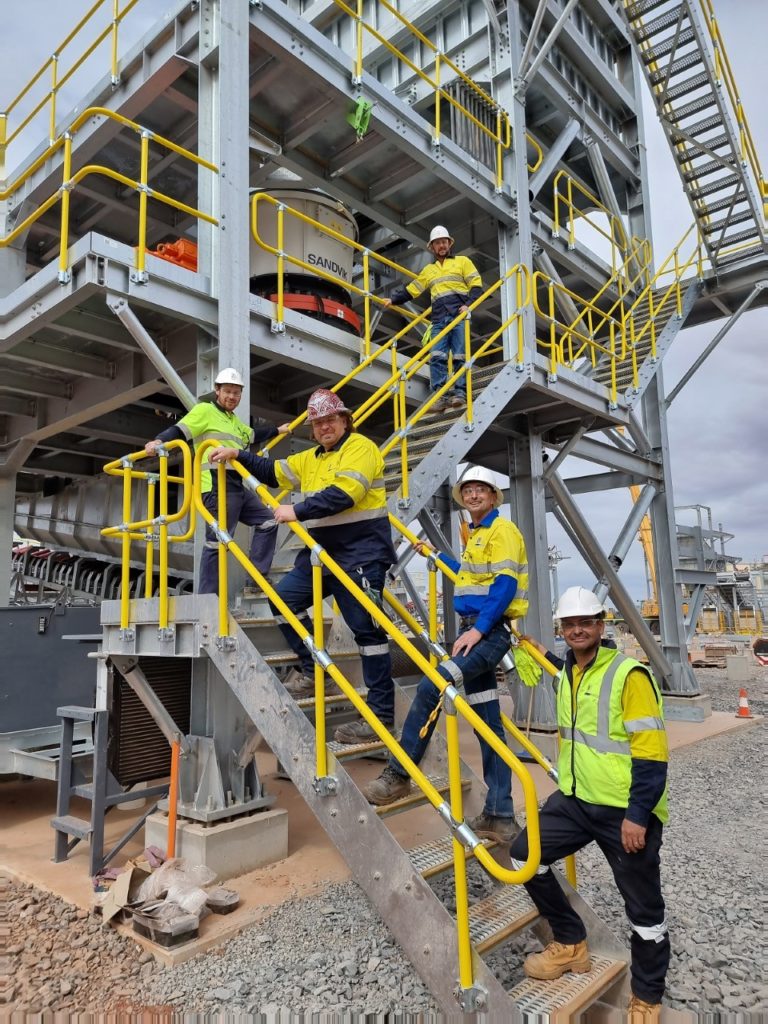A fluorite mine some 100 km outside Pretoria, South Africa, has become the first recipient of Sandvik Rock Processing’s first locally-manufactured SmartPlant™ in Africa.
Following its recent commissioning, the 300 t/h plant has already met process guarantees and reached nameplate capacity, according to the OEM.
To improve efficiency and productivity, a South Africa-based fluorspar producer went into the market for a new processing plant in 2020. The SmartPlant concept from Sandvik Rock Processing appealed to the customer for several reasons, but mainly because of the fast delivery time, flexibility and substantial cost savings it would offer the operation.
SmartPlant is a range of pre-defined Sandvik SmartStations that can be mixed and matched to meet individual customer needs for maximum productivity and performance, thus reducing wait time, maximising uptime and increasing profitability, according to Sandvik. Delivery generally takes about 22-30 weeks ex-works. Where there are peripheral design changes to the pre-defined SmartStations, lead times may be shorter than the standard 22-30 weeks.
According to Jaco Benade, Project Manager– Crushing and Screening at Sandvik, the deal was negotiated midway through the COVID-19 hard lockdown of 2020. The order was placed during Level 5 of the lockdown, with manufacturing commencing during Level 4. Despite the challenges brought about by the travel restrictions, compounded by the global supply chain disruptions, the plant was still delivered on time and within budget.
“A major talking point of the project was the short delivery time of 22 weeks ex-works at a favourable capital cost for the customer,” Benade says. “The SmartPlant concept allowed the customer to choose from the pre-defined SmartStations, combine and configure them to meet specific site and operational needs, with no extra design and engineering costs.”
While the designs are very much pre-defined, the SmartPlant still offered a great deal of flexibility for the customer, according to Glen Schoeman, Vice President – Sub-Sahara Africa at Sandvik Rock Processing.
“The modular approach of the SmartPlant meant that the customer could tweak design parameters such as height, capacity and liner profiles, amongst others, without much concern about cost deviations and time implications,” Schoeman said.
Regarding flexibility, Sandvik’s approach to the project was also a major plus for the customer. For example, based on its understanding of the customer’s budget and time constraints, Sandvik opted for the mine to commission a conveyor supplier of its choice, purely to shorten the time to production and reduce costs for the customer.
In line with Sandvik’s ‘safety first’ culture, the project was delivered with no lost time injuries, all the way from project inception to commissioning.
“Despite the arduous conditions on site, ranging from excessive heat to wet weather conditions, the project was completed with an impeccable zero harm safety record,” Schoeman says.
The new plant comprises a full suite of Sandvik equipment, including jaw and cone crushers, screens and feeders. Informed by customer needs, Sandvik opted for a much bigger front end of the plant, comprising a large tip area and bigger jaw crusher. The Sandvik CJ412 primary jaw crusher, which takes a 750 mm top size, is fed by a box bin and a grizzly feeder.
The plant also employs two Sandvik CH840i cone crushers for secondary and tertiary crushing, the very first units of the company’s 800i series range of cone crushers in Africa. Another first in Africa is the rotary feeder on top of the cone used to distribute material into the crusher.
“This is a fantastic approach,” Benade says. “The rotary feeder turns slowly, evenly distributing material around the edges of the crusher. This reduces pressure peaks in the crusher caused by uneven feed, a common challenge in crushing plants. The rotary feeder has passed with flying colours in terms of its performance at this particular site.”
The CH840i cone crushers come with Sandvik’s Automation and Connectivity System as standard. The system continuously monitors and optimises crusher performance and controls the complete lubrication system, increasing uptime and reliability. It can automatically adjust crusher settings to compensate for crushing chamber wear, ensuring consistent product size, according to Sandvik.
In addition, the SAM by Sandvik digital service supports operational excellence in the plant.
Benade concluded: “SAM by Sandvik brings people, activities and data together in an easy-to-use, seamless and collaborative way. It allows both client and OEM remote access to the plant. The system itself provides a holistic view of the plant, enabling the customer to make informed decisions and the OEM to respond proactively to any equipment health and performance issues.”









